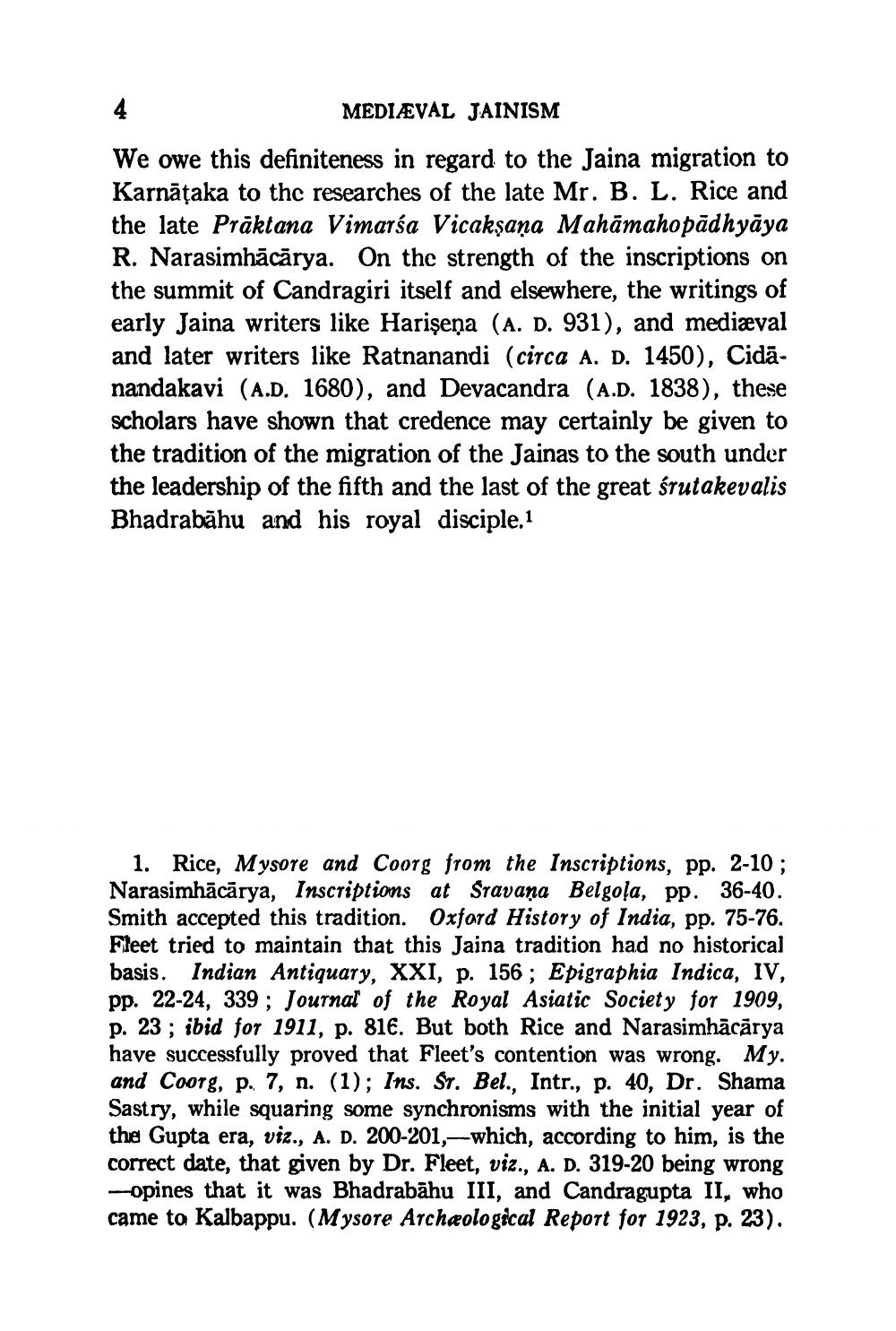________________
MEDIÆVAL JAINISM
We owe this definiteness in regard to the Jaina migration to Karnāțaka to the researches of the late Mr. B. L. Rice and the late Prāktana Vimarśa Vicakşaņa Mahāmahopädhyāya R. Narasimhācārya. On the strength of the inscriptions on the summit of Candragiri itself and elsewhere, the writings of early Jaina writers like Harişeņa (A. D. 931), and mediæval and later writers like Ratnanandi (circa a. D. 1450), Cidā. nandakavi (A.D. 1680), and Devacandra (A.D. 1838), these scholars have shown that credence may certainly be given to the tradition of the migration of the Jainas to the south under the leadership of the fifth and the last of the great śrutakevalis Bhadrabāhu and his royal disciple.1
1. Rice, Mysore and Coorg from the Inscriptions, pp. 2-10 ; Narasimhācārya, Inscriptions at Sravana Belgola, pp. 36-40. Smith accepted this tradition. Oxford History of India, pp. 75-76. Fleet tried to maintain that this Jaina tradition had no historical basis. Indian Antiquary, XXI, p. 156; Epigraphia Indica, IV, pp. 22-24, 339; Journal of the Royal Asiatic Society for 1909, p. 23; ibid for 1911, p. 816. But both Rice and Narasimhācārya have successfully proved that Fleet's contention was wrong. My. and Coorg, p. 7, n. (1); Ins. Sr. Bel.. Intr., p. 40, Dr. Shama Sastry, while squaring some synchronisms with the initial year of the Gupta era, viz., A. D. 200-201,—which, according to him, is the correct date, that given by Dr. Fleet, viz., A. D. 319-20 being wrong -opines that it was Bhadrabāhu III, and Candragupta II, who came to Kalbappu. (Mysore Archæological Report for 1923, p. 23).




